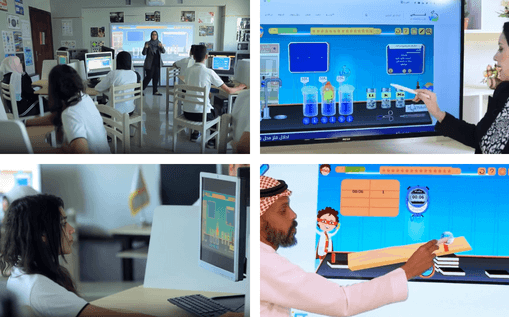

The goal of the experiment:Explain the idea of work the Hofmann's voltameterExperiments Tools:&nb......
Science
The goal of the experiment:Explain the idea of work the Hofmann's voltameterExperiments Tools: Hofmann's voltameter apparatus- holder- acidified water with dilute sulphuric acid- battery – glowing splintSteps of the experiment:The Observation & Conclusion:Keywords (English): Hoffman......
Keywords: Mixtures – Separation – Filtration – Liquid – Solid
Science
Keywords: Mixtures – Separation – Filtration – Liquid – Solid
This experiment aims to determine the density of solid objects by measuring their mass and volume. T......
Physics
This experiment aims to determine the density of solid objects by measuring their mass and volume. The mass is measured using a balance, while the volume is determined either from the object’s dimensions (if it has a regular shape) or by water displacement in a graduated cylinder (if irregular). The......
Keywords: Radius – Concave mirror – Center of curvature – Light
Science
Keywords: Radius – Concave mirror – Center of curvature – Light
Keywords: Acids – Bases – Indicators – pH – Color
Science
Keywords: Acids – Bases – Indicators – pH – Color
Unit One: Chemical Reactions. Lesson two: the speed of chemical reactions.Keywords (English): t......
Chemistry
Unit One: Chemical Reactions. Lesson two: the speed of chemical reactions.Keywords (English): temperature – reaction rate – energy – collisions – chemistry
Put Your Students In the Shoes of Real Scientists
Provide your students with enjoyable online science laboratories, according to their curricula in the fields of science, chemistry, physics, and biology.
Explore Labs
Delivering the Learning Advantage You Need to Succeed
Vlaby are proven to engage students, reduce distraction rates, and drive equitable learning outcomes, by enhancing your teaching of national or international curricula
Designed by and for Science Teachers
Vlaby saves teachers time and effort in doing practical experiments, and allows them to manage more teaching time by implementing multiple activities, Although Vlaby is easy to use, we also provide ongoing training for teachers.
Vlaby Adapts to Any Learning Style
Vlaby provides instructions for virtual experiments in five different languages: English, Arabic, French, German, and Indonesian, You can change the language with ease, whether by choosing the language on the platform or from within the experiment.
Designed by and for Science Teachers
Vlaby applies the game mode in experiments for students, where they can earn stars, badges, and cups by conducting experiments without instructions. This enhances their knowledge of the experiment and helps the teacher in evaluation as well.
Integrate With Your Existing LMS
Vlaby sets up your LMS or school website integration. Get full control with your students over 350 hands-on experiments on your site, integrated with different grading methods with our virtual science lab, all in just a few hours.
Vlaby platform offers subscriptions for:
Schools: Subscriptions per student depending on the number of students in the school and free subscriptions for teachers

 (1).png)
Egypt - Cairo Governorate
 (1).png)
Egypt - Obour City
 (1).png)
Egypt - Cairo Governorate
 (1).png)
Egypt - Cairo Governorate
 (1).png)
Egypt - Giza Governorate
 (1).png)
Egypt - Sadat City
 (1).png)
Egypt - Assiut Governorate
 (1).png)
Egypt - New Sohag City
 (1).png)
Egypt - Beheira Governorate
 (1).png)
Egypt - Minya Governorate
 (1).png)
Egypt - New Minya City
 (1).png)
Egypt - Governor of Assiut
 (1).png)
Egypt - Alexandria Governorate
 (1).png)
Egypt - Kafr El Sheikh Governorate
 (1).png)
Egypt - Sharkia Governorate
 (1).png)
Saudi Arabia - Jeddah
 (1).png)
Egypt - Cairo Governorate
 (1).png)
Egypt - Alexandria Governorate
 (1).png)
Egypt - Giza Governorate
 (1).png)
Egypt - 10th of Ramadan City
 (1).png)
Egypt - 10th of Ramadan City
 (1).png)
Egypt - Gharbia Governorate
 (1).png)
Saudi Arabia - Mecca
 (1).png)
Saudi Arabia
 (1).png)
Egypt - Helwan
 (1).png)
Egypt - Giza Governorate
 (1).png)
Saudi Arabia
 (1).png)
Egypt - Cairo Governorate
 (1).png)
Egypt - Cairo Governorate
 (1).png)
Saudi Arabia
 (1).png)
Egypt - Mahalla El-Kubra city
 (1).png)
Egypt - Cairo Governorate
 (1).png)
Egypt - Giza Governorate
 (1).png)
Egypt - Menoufia Governorate
 (1).png)
Egypt - Kafr El Sheikh Governorate
 (1).png)
Egypt - Sohag Governorate
 (1).png)
Egypt - Alexandria Governorate

Kaumeya Language School (KLS)

American Division